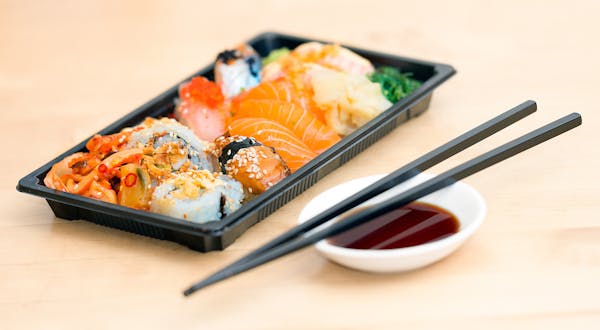Asian food is one of the world's oldest cuisines, and it's incredibly diverse. It has something for everyone - from spicy lovers to vegetarians and gluten-free diners.
Often, Asian dishes are lighter and healthier than their Western counterparts. This means that they're a great option for people who are trying to lose weight or maintain their current diet.
Fish and Seafood
Fish and seafood are a huge part of Asian food preparation. They provide important protein, vitamins and minerals. They also contain omega-3 fatty acids that can be beneficial to our health.
The most common types of fish are sardines, herring, salmon, cod, flatfish (halibut, sole, and turbot), redfish, and jack mackerel. These fish are rich in omega-3 fatty acids which can help protect against heart disease.
Other types of seafood include clams, oysters and mussels. Crustaceans such as shrimp and lobster are also popular in some parts of the world. Edible sea plants such as some seaweeds and microalgae are also classified as seafood.
Some commercial and subsistence fishers catch wild seafood in the ocean, while others raise them in ponds or cages. Most seafood is caught in the open ocean by big commercial fishing boats.
Seafood is an essential part of many Asian cuisines and has been a part of human history for thousands of years. It provides bioavailable nutrients that are difficult to obtain from land-based diets, such as omega-3 fatty acids, phosphorus, iron and zinc.
As a result, seafood is an important source of food and nutrition for humans throughout the world. It can be eaten raw or cooked in various ways, such as steamed, baked, boiled, or stir-fried.
In addition to its protein-rich content, fish is an excellent source of dietary fiber and antioxidants. These nutrients can also protect against cancer, heart disease and other ailments.
The health benefits of eating seafood are well known, and the World Health Organization has a comprehensive report on the nutritional value of various types of fish. It notes that seafood is a high-quality source of omega-3 fatty acids and contains a wide variety of vitamins, minerals and other nutrients.
Vegetables
Vegetables are a very important part of Asian food preparation. They are used as ingredients in a variety of dishes, including salads and stir-fries. Many of these vegetables are high in vitamins and minerals, making them excellent additions to a healthy diet.
Bok choy is another vegetable that has many uses in Asian cooking, both raw and cooked. This cruciferous veggie is a great source of vitamins A, C, K, and iron. It can be steamed, stir-fried, and added to soups.
Chinese celery is a common ingredient in Asian dishes, especially in stir-fries and soups. It is very similar to celery grown in the West but has a stronger taste and thinner stalks. It is often used in a sweet sauce that compliments the bitterness of the celery. Japanese eggplant is a popular vegetable that is highly nutrient dense. It is also very versatile, able to be roasted, included in soups, and tossed into stir-fries.
Scallions are another important vegetable to include in your meals. They are a good source of Vitamin A and Vitamin K, plus they contain potassium and folate. They can be found in both fresh and dried forms.
Lemongrass is a great herb that is a staple of Asian cuisine. It is known for its strong smell and flavor, making it an excellent choice to add to a curry. Taro is a root vegetable that is native to Southeast Asia and is a popular ingredient in many dishes.
It is a great substitute for potatoes in dishes like poi and has a very mild flavor that pairs well with other flavors.
In South Asia, mustard greens are a very common vegetable. They are a heart-healthy addition to a meal and are often served with protein for a complete meal.
Spices
These spices and herbs can be dried or fresh, depending on their availability. Many spices are available in powder form, while others can be used as whole seeds or roots.
Some common Asian spices include ginger, garlic, and chili peppers. These flavors add zest and a bold kick to many different dishes. Garlic, in particular, is a great addition to soups and stews, as well as rice and noodles.
Turmeric is another common ingredient in Asian cuisines, and it can add a gorgeous yellow color to your dish. This spice is also known for its healing properties and is a natural anti-inflammatory.
Star anise is an aromatic spice that can be found in a number of Asian recipes. It is a powerful flavor and smell that makes it a great addition to marinades, soups, and sauces.
Cardamom is another popular ingredient in many Asian dishes. It is a spice that has been in use since ancient times. It is available in powder or seed form, and can be crushed or ground for added flavor.
Whether you prefer to use ground or whole spices, it is best to store them in an airtight container. Direct exposure to sunlight or heat will reduce their shelf life.
It is also important to use fresh spices, as they can lose their flavor over time. The best way to ensure that you are using the most fresh spices possible is to grind them before incorporating them into your dish. This will increase the overall taste of your meal, while also prolonging their shelf life.
Cooking Methods
The main ingredient used in Asian food is fresh vegetables, which means that they’re often cooked longer than Western vegetables. This allows them to retain their nutrients and make the dish more flavorful.
In addition to these basic ingredients, Asian cooking also uses a variety of cooking techniques. These include stir-frying, deep frying, steaming, stewing and boiling.
While the specific methods may vary from region to region, most Asian recipes favor quick preparation and short cooking times. This can be a great way to cook healthy meals without spending much time in the kitchen.
It can also be helpful to keep a few basic cooking utensils in the kitchen when cooking Asian foods. These include a wok, which is a large pan that is used to stir-fry or cook meats, a Chinese scoop strainer and long chopsticks.
Using these tools will help you get the most out of your cooking experience. You can use the tools to crush spices, grind garlic or pound meats and vegetables.
These tools can be purchased at any grocery store or Asian market. Be sure to use a sturdy work surface when working with a mortar and pestle.
Other items you might need are a vegetable peeler, a knife, a tongs and a fork. These are essential tools when cooking Asian food and will allow you to cut up the various ingredients quickly and easily.
Top 5 Asian Food Recipes You Can Make at Home
Health Benefits
Aside from being low in calories, Asian foods are also high in antioxidants and minerals. These antioxidants can help you fight disease and maintain a healthy body.
Probiotics - Fermented foods like tempeh, miso, and kimchi contain "good bacteria" that support immune function and balance inflammation in your gut, according to the Cleveland Clinic. This can reduce your risk of irritable bowel syndrome, ulcerative colitis, and H. pylori (the cause of ulcers).
Herbal Tea - Green and black tea contain many anti-inflammatory compounds and beneficial antioxidants that can reduce your risk of cancer and chronic diseases. They also can help lower your blood pressure, thereby reducing your risk of heart disease.
Fiber - Foods rich in fiber, such as vegetables and fruits, promote a healthier digestive tract and are good for weight control. They may also help you feel fuller longer.
Mood Enhancement - Herbal ingredients, like ginger, increase serotonin levels and boost your mood, helping you to relax and unwind. They can also sharpen your brain function and improve your memory.
Weight Loss - In addition to being low in calories, Asian dishes are typically made with spices, such as garlic and ginger, that can help you lose weight. This can be especially helpful for those with diabetes, as spices are often low in fat and salt.
Heart Health - Asian diets tend to be higher in vegetables and seafood, which is linked to a reduced risk of heart disease. This is because these foods are naturally low in saturated fats and cholesterol, compared to meats and processed foods.
If you're looking to increase your intake of these healthy foods, you should try eating a variety of different types of Asian dishes. This will ensure you're getting all the nutrients your body needs every day.



